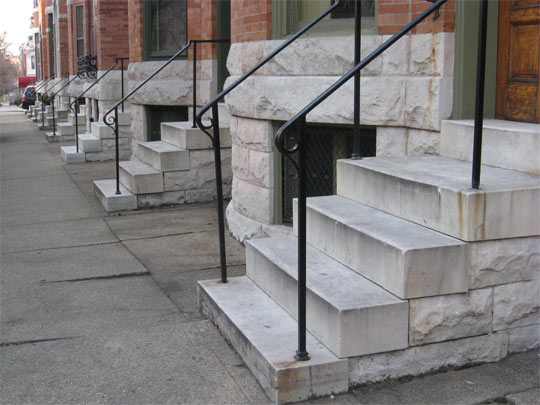For the past nine months I’ve had the pleasure of working with kids through a nutrition education program called Food as Medicine at a local Baltimore middle school. Twice a week, once after school and once in the 6th grade classroom, volunteers help students think critically about the food they eat and teach them how it affects their body. We’ve had such success in the first year the kids are planning to get a salad bar for the school and have already made a commercial promoting healthy choices (soon to be released on YouTube, it’s a rap to the tune of Drake’s “Started from the Bottom“).
As an AmeriCorps VISTA, you live in poverty and fight poverty through program development and capacity-building. If you know me, you know that I hate using the words “poor” or “poverty” because they create a one-dimensional view in peoples’ minds. Being “poor” doesn’t only mean that you don’t have enough money; it means a much more fundamental lack of resources and opportunity. Yes, the middle school I work at in Waverly is Title I, meaning that about 76 percent of students are low-income and 98 percent of them receive free lunches. But it is the lack of access to society’s institutions and opportunities that creates the true detriment to their health and to their success later in life.
School budgets are determined by enrollment, with schools receiving about $5,000 for each child and a little bit more for special education and advanced students. That is the school’s entire budget that goes to food, toilet paper, teacher’s salaries, projectors and everything else. That leaves little extra for programming or even what many people consider basics. So this school of 6th – 8th grade students cannot afford languages, arts, P.E., health or science education. Aside from our program, the students have no other opportunity for after-school clubs or sports.
Ten years ago, all these students were zoned to Roland Park Middle School, which is one of the best in Baltimore but then were re-zoned to Waverly which didn’t even have a building for these kids to go to. The School Board promised the community a school equal to the quality of Roland Park, but instead gave them an old community center that was scheduled to be shut down and no funding to build it up. The community worked very hard for donations and to get the building suitable for children. Now the building looks nice, but the kids are left with no gym, equipment, playground or drinking water. Want to wash that apple you brought to school for snack? You can, but you will get lead all over it.
So it’s no surprise that these kids don’t know how much sugar is in soda or cereal or even chocolate milk. They don’t know that whole milk, Cheetos and fries have a whole bunch of fat in them. They didn’t know that you can die from strokes, heart attacks and diabetes which all are diseases mostly dependent on diet. Thanks to our program, students can identify what are healthy fats, that hydrogenated oils are bad for you and that too much sugar can cause diabetes. They know why vegetables are healthy and not just that they should eat them. Most importantly, they are more willing to try new foods. Before, students only ate things because they tasted good (and they still do) but now they know how to make healthy choices on their own because we told them how to read food labels and what nutrients are essential, and opened their eyes to all the dirty secrets of processed foods.
Luckily, things are looking up for the Waverly community. They worked very hard to get a brand new $30 million building — the first new school building for Baltimore in 15 years. Next year they will actually have a gym, science labs and enough room to fit 900 kids — more than double the enrollment now. With a building that has safe drinking water they can actually get a salad bar and wash their fruit. They will have an actual kitchen that doesn’t just re-heat food but will be equipped with real cooking utensils. They will have a real gym and a real playground to run around in. With more than double the possibility for funding, they will be able to hire science, health and P.E. teachers and finally will have the resources and opportunities to excel in life.


Great post, Leanne.
There are so many different environments throughout the city, neighborhood by neighborhood as usual. It’s great that you and your colleagues were able to reach these kids and that the outlook for the school system is looking up.